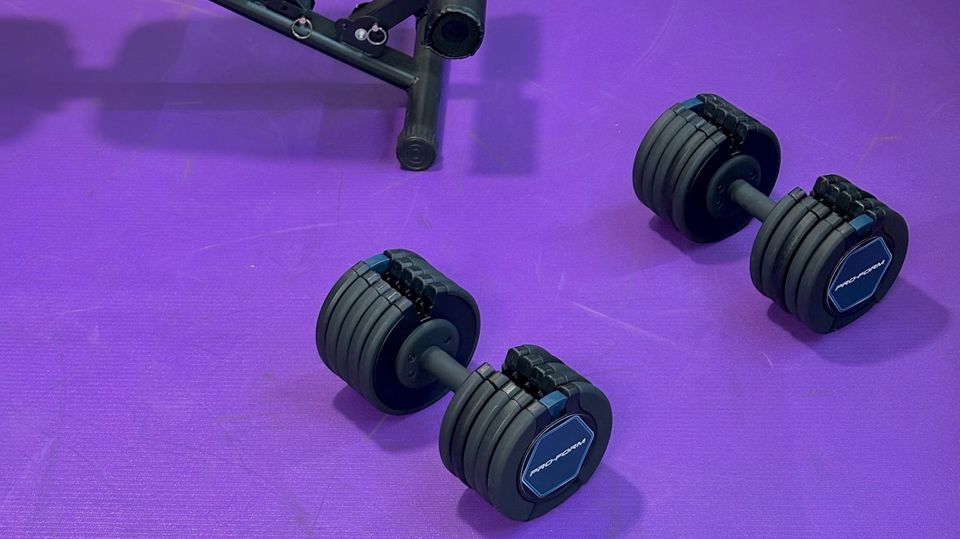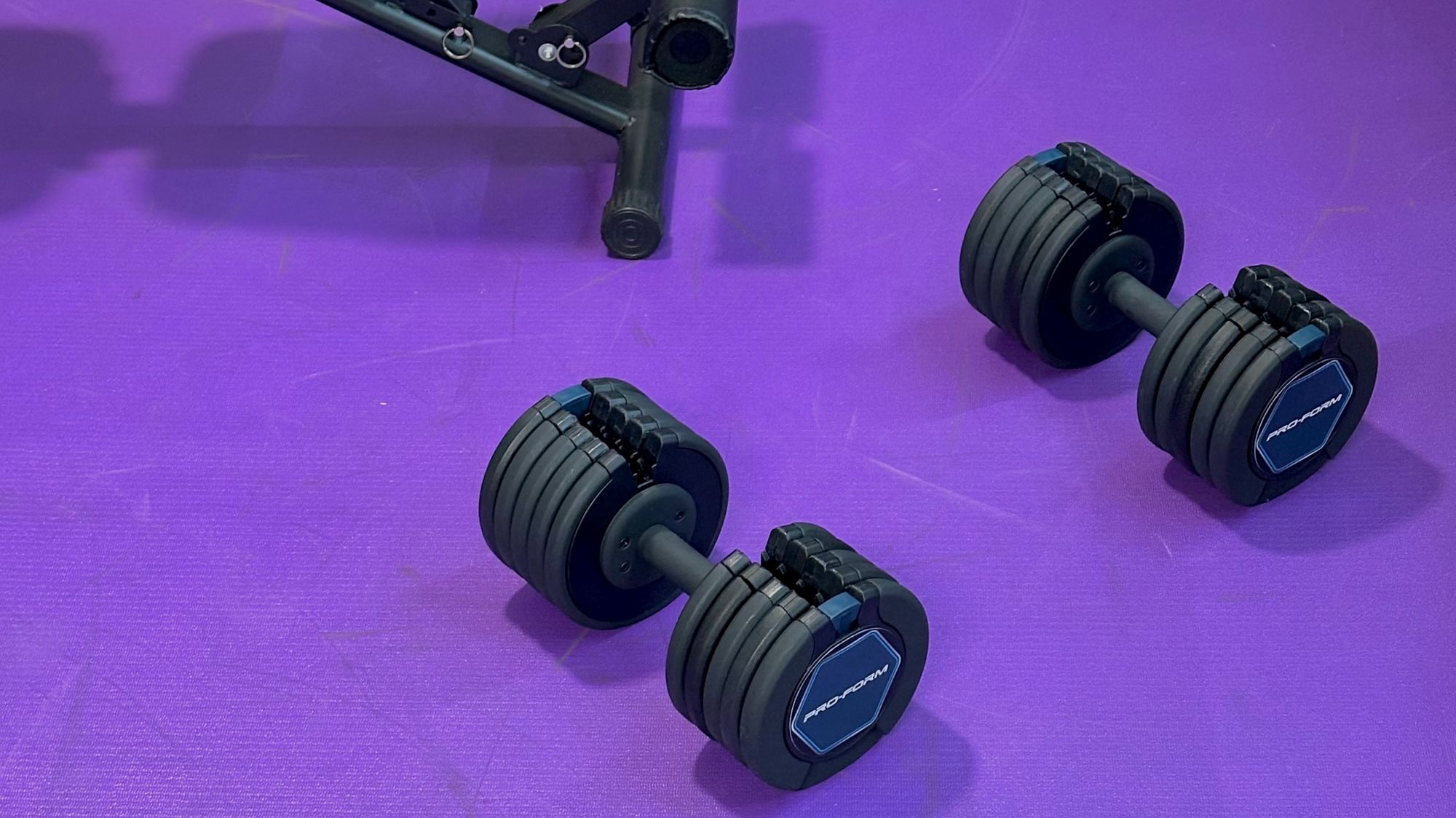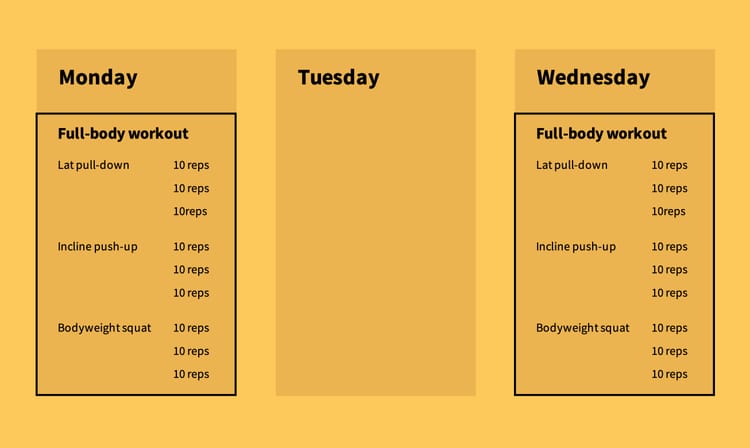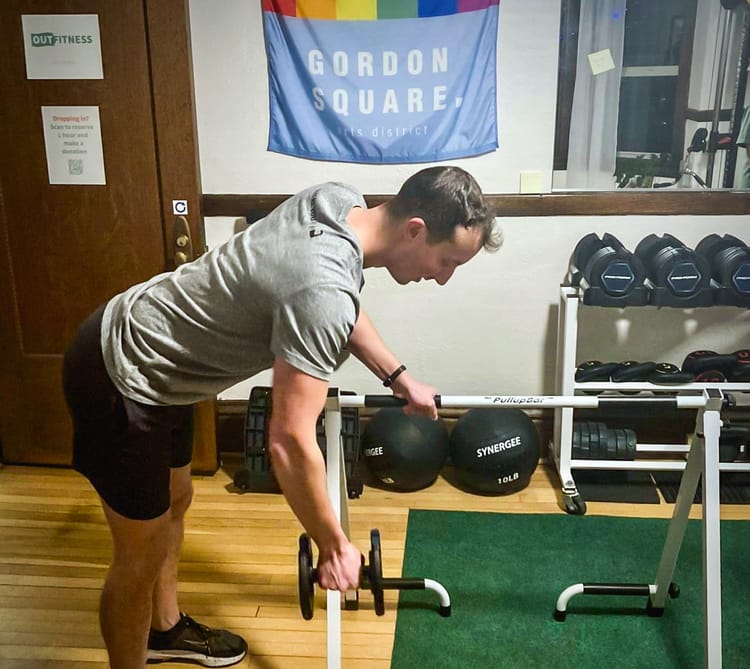How many reps?


Here's a short explainer for a common question: How my repetitions should I do in one set of a strength exercise?
There are several schools of thought about rep ranges. I'll debunk a couple and then provide a strong recommendation!
First, we'll start with this premise from my workout planning guide: You will perform typical strength exercises for 3 sets, and each set will average 8-12 reps, since most studies show muscle growth is efficiently stimulated within that range. But responses to strength training vary body-to-body, so, ultimately, you will need to experiment with the number of sets and reps to find what feels good and drives progress for you.
Let's consider some different approaches to repetitions.
Repeat until it hurts? ❌
Moving weights around until you hurt is not wise. This fails my first rule of strength training!
Pain (beyond stress or discomfort) is your body's signal that the amount of resistance being applied is injuring or inflaming your tissues or joints. While strength gains happen during your rest between workouts, healing from an injury requires several days, months, or even years of rest! In addition to being unenjoyable, that's a lot of lost training time.
Repeat until you fail the last rep? ❌
Training "until failure" is popular advice. This means repeating a movement until you fail to complete the movement with good form. For example, if you're completing a lat pull-down, the bar would not come down fully during your last rep, and you'll likely find your shoulders rolling forward and your neck straining.
Stressing muscles stimulates them to grow, so it might seem logical to maximize that stress. Unfortunately, this does not maximize growth. As you perform your last rep incorrectly or incompletely, your fatigued muscles transfer the stress to other muscles, and this strains them, because they are indirectly leveraged by the movement. This makes you more likely to injure yourself, perhaps in places you wouldn't expect. Even if you rarely injure yourself while training to failure, the recovery time needed to heal from even one injury will mean less training time, resulting in lower strength increases over the long term.
Stop when you think you could only do 2 more reps ✅
Stop before you need to stop? Sounds counterintuitive, but it's working smarter, not harder!
Let's imagine that 8-12 range of reps (or your own personalized range) that you will complete for each set of an exercise. When you start a set by moving that weight, you will aim for 8-12 reps, but you will stop just when you feel you only have 2 good reps left in you.
This method allows you to challenge yourself – "I made it to 11 reps!" – while also being conservative enough to avoid injury, since stopping 2 reps short of failure means you won't attempt a movement with poor form or under great fatigue. This approach is called training with reps in reserve (RIR).
I believe RIR is a superior tool for several reasons:
- It's easier to use than other calculations like "percentage of 1-rep maximum."
- It adapts to the wide individual variations in reps completed with the same relative load.
- Perhaps most importantly, it helps you protect yourself during your low-energy days and go further during high-energy days!
You can use RIR to autoregulate your training — adjust your exercise intensity based on your body's performance. When you struggle to reach your 8-12 range while still keeping 2 reps in reserve, then the weight you're using is probably too heavy. On the other hand, when you easily complete sets of 12+ reps with 2 RIR, it might be time to increase the resistance. For more detailed instructions, check out the "2-for-2 rule" in my workout planning guide.
Predicting your reps in reserve accurately does take practice! But studies show you get more accurate both after your first set of each exercise and after about 3 weeks of consistent workouts. And lifters probably underestimate their reps in reserve, so we're being doubly conservative by stopping at 2 RIR.
Despite us being conservative with this approach to repetitions, studies indicate that lifters training at 2-4 RIR make gains at least as effectively as training with percentages of 1-rep maximums.
Want to learn more? Reps in reserve (RIR) is a variation of a training tool called Rating of Perceived Exertion (RPE), which is most commonly expressed as an intensity scale of 1-10. (My favorite workout logging app allows you to record RPE 1-10 for each set of an exercise.) There are lots of studies and articles about RPE in strength training. The excellent strength writer Casey Johnson wrote this beginner-friendly article about training at RPE 8 – and RPE 8, by no coincidence, corresponds to 2 RIR.






